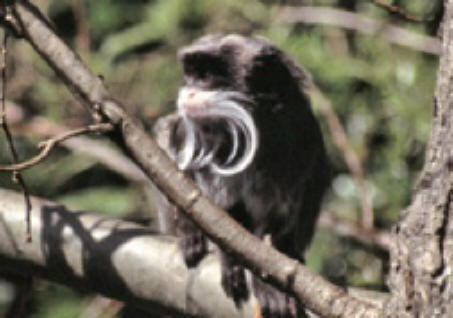Adaptation
Eyes: Two-thirds of the female Tamarins are Trichomats; which means that they see three colors (normal color vision). Having this type of vision allows the females to have an easier time detecting ripe fruit. The rest of the females and all of the males are dichromats; they only detect two colors. Dichromats have an advantage in detecting predators and prey that are camoflauged (Smuts).
Small Size: Their light weight and small size lets them get to the ends of branches and twigs whereas larger monkeys are not able to do that. Their stature also allows them to be "leapers", going from tree to tree in a stealthy way. Tamarins need to be quick in order to catch their prey from the leaves and to get away from the predators above and below them (McDade).
Tail: Their tail acts a fifth hand by gripping and letting the monkey have more freedom (McDade).
Hands: Tamarins found their niche by snatching their prey instead of probing for it in trees like the Lion Tamarin. Their fingers aren't long enough to do so (McDade).
Mustache: There is no known reason why the Tamarins have such a large mustache (McDade).
Calls: They make loud alarm calls to warn their group of predators nearby (McDade).
Photograph obtained by: PD taken at de Apenheul Primate Park, Apeldoorn (The Netherlands)
Interactions
It is common for Mustached Tamarins to have a mutualistic relationship with Saddleback Tamarins. Mustached Tamarins perch up on the higher levels of the jungle canopy and watch for danger from above. They also flush prey down to the lower levels for the saddlebacks. The Tamarins on the lower strata of the forest in turn detect predators from below. This relationship is ideal for the saddlebacks and the mustached Tamarins because they can work together without mixing group standing and mating (McDade).
